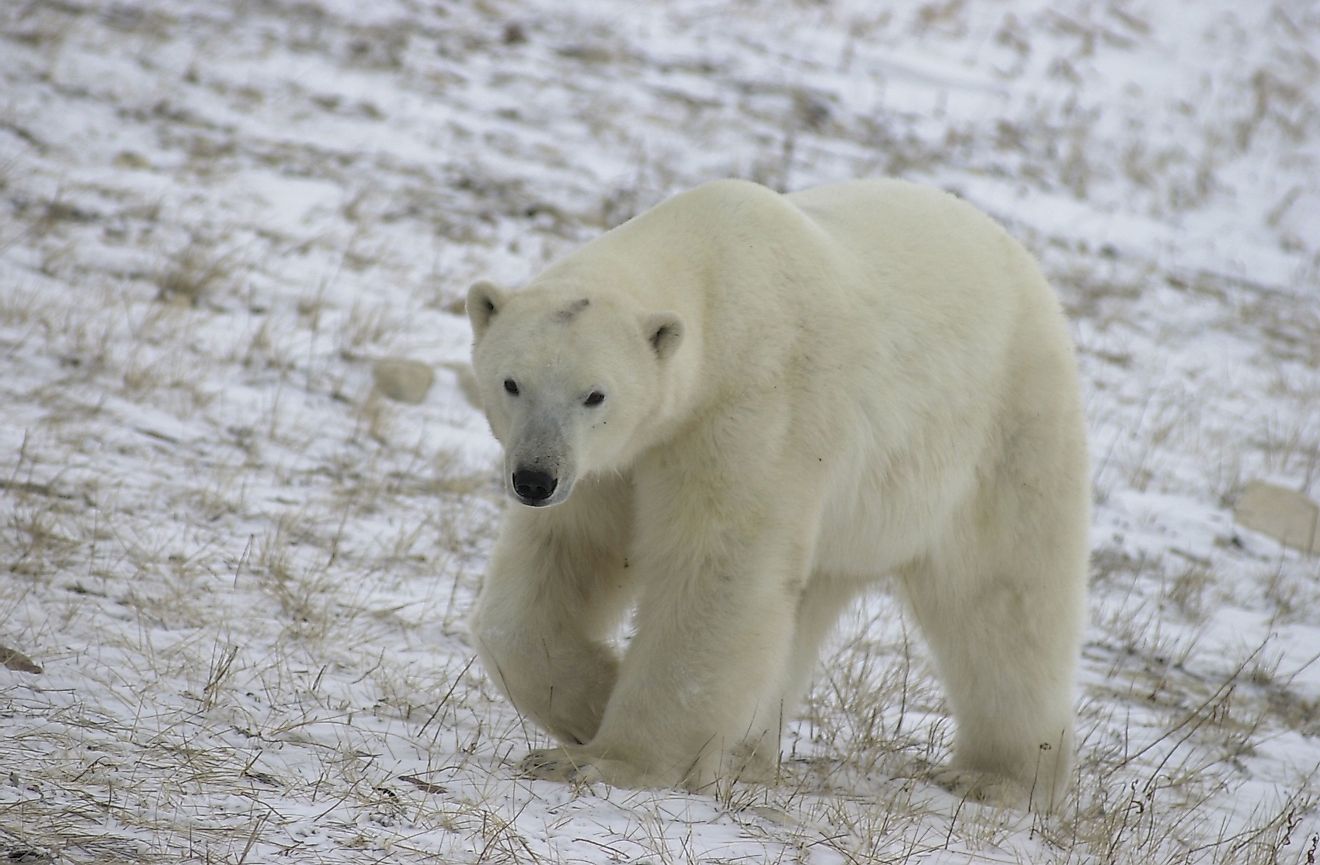Polar Bear Facts: Animals of North America

5. Physical Description
Aptly named for such great swimmers, Polar bears’ scientific name, Ursus Maritimus, means “maritime bear”. About the same size as its omnivorous cousins, Kodiak Bears, a male polar bear (boar) can be expected to grow two to three times larger than a normal female (sow). A boar can weigh between 350 and 650 kilograms and can reach 2.5 to 3 meters long. A sow can grow between 1.8 and 2.5 meters long and normally weighs between 150 and 250 kilograms. Interestingly, a pregnant sow can weigh up to 500 kilograms. Though it is more popular to have a white coat, a polar bear’s color varies from white, yellow or light brown. The color depends on the season and light’s angle. The body of a polar bear is slenderer, and its neck and head longer, than those of other bears.
4. Diet
Polar bears are strictly carnivorous. They source their massive sizes from feasts of the Ringed and Bearded Seals upon which they constantly prey. They may also eat a variety of finfish, shellfish, birds, eggs, and smaller mammals when seals become scarce. The main habitat of a polar bear is an offshore pack of ice and the coasts of the Arctic region, as living in pack ice is their best option so they can stayclose to seals, their main source of food, which also live on the ice. They were hunted as an important source of food, clothing, and shelter materials by aboriginal arctic peoples, and many of their organs and appendages were kept as sacred talismans.
3. Habitat and Range
Polar bears live throughout much of the Arctic regions. They have adapted to live on both land and water and, more so than any other species of bears, they are first-rate long distance swimmers. Their habitat is very cold, but, with their thick skin and fur, they can manage to take long swims in the freezing ocean waters and live adrift on solid ice. More than 40% of polar bears alive today can be found in Northern Canada. Polar bears are considered to be an “endangered” species. They are hugely impacted by human activities affecting the climate of planet Earth. Due to the “Greenhouse Effect”, the earth’s temperatures have risen, causing the precious ice and snow in the Arctic regions to melt. It means the polar bears are losing their home and food sources. As ice melts, ice packs break apart, and Polar bears must swim farther and farther distances in pursuit of seals. Many drown in the process. Without their traditional, unfragmented habitats, it will become increasingly difficult for Polar bears to survive.
2. Behavior
A Polar bear is generally active on the first third of each day, and becomes less vigorous during the last third. Adult sows with cubs hunt for food for 19% of the time in spring, and 38% of their time in summer. Alternatively, the boars spend 25% of springtime hunting, while hunting takes 40% of their time available to be spent in summer. Polar bears are generally unsociable, and they usually live in one of two social units when they are together with others: either adult sows and her cubs, or breeding pairs. Polar bear mothers are very attentive to their cubs, while breeding pairs stay together for more than a week and mate several times. Fighting often breaks out between competitors during mating season, as well as when a boar tries to steal food from other polar bears.
1. Reproduction
Breeding season starts in March and ends in June. Within this timeframe, mating is especially active in April and May. Males and females generally meet one another by crossing paths on ice packs during seal hunts. Females breed once every three years, and the competition to win a female polar bear is stiff. Before mating, an adult female may attract the company of several males at once. In such cases, the Polar bear boars fight each other, and the fiercest will win the rights to mate with the sow in question. Dominant male Polar bears may mate with several females each season. After a successful breeding, a female polar bear will usually bear a pair of cubs after eight months. Even at birth, male cubs are quite longer than females. Despite their fierceness and grandeur as adults, polar bear cubs are born helpless and small, with closed eyes.











